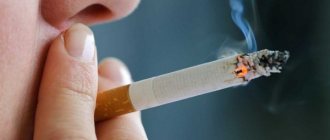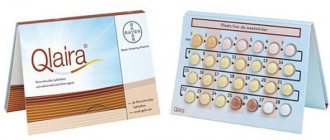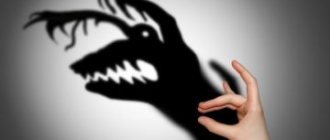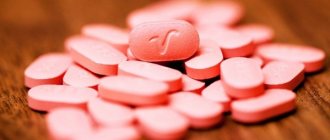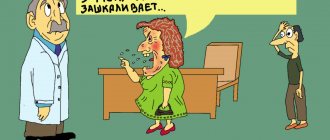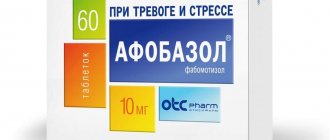Fifty to seventy years ago, the term “panic attack” was unknown to few people. It was mentioned mainly by psychotherapists. Nowadays the situation has changed. Many have heard about them, some have observed them, and some have had the “fortune” to experience what a panic attack is. Acceleration of the rhythm of life, flows of people encountered every day, especially in megacities. The development of news media that constantly report news, often about negative and difficult events, wherever they occur. The desire of modern man is not to miss anything. All these factors overload the psyche. In such conditions and at such speed, it often cannot cope with the load. The psyche responds to stress overload with discomfort, fear, and anxiety. Their acute manifestation is panic attacks.
Symptoms of a panic attack in women
What it is?
Panic attack syndrome is more common than is commonly thought - it affects approximately 5% of people, mostly young people - from 20 to 30 years old. Moreover, women suffer from panic attacks more often than men. Panic as a natural reaction to stress is familiar to many, but why does it sometimes arise “out of the blue”, for no apparent reason?
A panic attack provokes a sharp release of adrenaline, a hormone that prepares the body to react to a potentially dangerous situation, triggering the “flight or fight” mechanism. The heart rate increases and breathing becomes more intense, which leads to hyperventilation of the lungs and a decrease in the level of carbon monoxide in the blood - it is this reaction that causes dizziness, numbness in the limbs, tingling in the fingers and sometimes on the scalp.
Such a response of the body to danger is absolutely normal, and a panic attack is just a failure in the system, due to which the “emergency mode” is activated without obvious need.
Treatment of panic attack in men
Classic methods of combating panic can prevent and eliminate anxiety attacks in men: breathing techniques, muscle relaxation, behavioral and gestalt therapy.
In addition, you should treat panic attacks yourself. In this case, a man needs to develop self-control, normalize self-esteem, and learn positive thinking. Here are some tips to help increase your stress tolerance:
- Start training. Exercise promotes a good mood, and being in good physical shape improves self-esteem.
- Meditate. Turn on calm music and try not to think about anything. Periodic meditation can restore strength and calm.
- Give yourself compliments. Mentally or out loud, it doesn’t matter. Celebrate your best features, thank yourself for it. It is most effective to carry out this method in front of a mirror.
- Create your own ideal image. Imagine yourself as you would like to be, down to the smallest detail. Note the character, manner of speech, voice, movements, reaction to different situations. The imagination, the strongest human mechanism, comes into play.
- Learn to forgive yourself. Realize that no one is perfect and everyone can make mistakes. Acknowledge it and tell yourself that it will not happen again in the future.
Classification
To successfully treat panic attacks, you need to understand what they are and what causes them. The correct choice of treatment method will depend on this.
There are usually three main types of PA:
- Spontaneous panic attacks occur for no apparent reason. With such PA, it is necessary to undergo a full examination to exclude the presence of somatic diseases. If they are not there, see a psychotherapist.
- Situational PAs occur during a specific traumatic situation. You can contact a psychotherapist without an in-depth examination, since the person’s fear, which causes all the symptoms, is obvious.
- Conditioned situational PAs occur when exposed to a specific chemical or biological stimulus. Such a stimulus can be the use of alcohol or drugs, hormonal surges at different periods of the menstrual cycle, etc. If such a connection can be traced, then you need to contact a specialized specialist.
Possible reasons
Psycho-emotional factors often lead to panic attacks.
The process of developing a panic attack is similar to how fear of an obvious danger or threat develops. However, in the case of panic, no threat exists; it is formed in the head, is fictitious, and the body reacts to it as if it were real.
Considering panic attacks in females, we can distinguish general ones, which also occur in men, as well as specific ones, which are noted only in women due to the characteristics of their body.
- Hereditary factor. Panic attacks can occur as a result of a genetic predisposition.
- The presence of a pathological process in the body. Somatic diseases are negatively reflected not only on the physical level, they also affect the growth of anxiety. The woman is depressed, feels irritable, and is emotionally unstable due to her weakness. She is visited by fear about a possible deterioration in her health, which can be an excellent reason for a panic attack.
- Hormonal disbalance. It can be physiological, for example, during menopause or pregnancy, as well as pathological, when the level of hormones changes as a result of incorrect functioning of the adrenal glands or thyroid gland. If we consider, for example, excess production of adrenaline, then a person will feel fears, constant excitement and anxiety, which over time will provoke a panic attack.
- The presence of psycho-emotional factors: psychological trauma, depression, psychodisorders, phobias are often the main provocateurs of panic attacks, which have serious manifestations.
- Side effects of medications. There are a number of medications that stimulate panic as a result of increased hormonal levels. This particularly includes steroids and sleeping pills that contain barbituric acid.
- Increased emotionality in female representatives, excessive worries about any reason, increased suspiciousness can lead to a woman having a panic attack.
Why does a panic attack develop?
There are 3 groups of factors that can provoke a panic attack: psychogenic, biological and physiogenic. In clinical practice, it has been observed that there is often a combination of several provoking triggers. Moreover, some of them are decisive in the occurrence of a primary attack, while others initiate repetitions of a panic attack.
Among psychogenic triggers, the most significant are conflict situations - a showdown, divorce, scandal at work, leaving the family, etc. In second place are acute psychotraumatic events - an accident, death of a loved one, illness, etc. There are also abstract psychogenic factors that affect on the psyche through the mechanism of opposition or identification. These include books, documentaries and feature films, television programs, and various Internet materials.
Biological triggers include various hormonal changes (mainly in women in connection with pregnancy, abortion, childbirth, menopause), the onset of sexual relations, hormone intake, and features of the menstrual cycle (algomenorrhea, dysmenorrhea). It should be noted that paroxysms caused by endocrine diseases - hormonally active tumors of the adrenal glands (pheochromocytoma) and thyroid diseases occurring with hyperthyroidism are not considered a panic attack.
Physiogenic triggers include acute alcohol intoxication, drug use, meteorological fluctuations, acclimatization, excessive insolation, and physical stress. Some pharmacological drugs can provoke a panic attack. For example: steroids (prednisolone, dexamethasone, anabolic steroids); bemegride, used for induction of anesthesia; cholecystokinin, used in instrumental diagnostics of the gastrointestinal tract.
As a rule, the appearance of panic attacks is observed in individuals with certain personal qualities. For women, this is demonstrativeness, drama, a desire to attract attention, and the expectation of interest and participation from others. For men - initial anxiety, increased concern for their health and, as a result, excessive listening to the state of their physical body. It is interesting that altruistic people, more inclined to give to others than to desire for themselves, never encounter problems such as panic attacks and other neurotic disorders.
Precautionary measures
Sport helps counter stress factors that lead to panic attacks
A woman can follow certain recommendations in order to reduce her likelihood of developing panic attacks.
- It is necessary to learn breathing techniques in order to be able to relax on your own, reducing your level of anxiety.
- You need to play sports, because when you do physical activity, the body releases a hormone of happiness, which improves your mood and reduces anxiety.
- It is advisable to practice meditation and yoga. These eastern practices allow you to relax the body and improve a person’s internal state.
- Maintaining a daily routine. It is important that sufficient time is allocated for sleep and that there is a proper balanced diet with a sufficient amount of vitamins and minerals. It is important to distribute your day between activity and rest.
- You need to take care of developing a hobby that will fill all your free time, allowing you to feel successful, enjoy the results of your activities, which will ease your psycho-emotional state.
Now you know what the signs of panic attacks in females are. As you can see, there can be many reasons influencing the occurrence of such attacks, both physiological and pathological. If you notice characteristic symptoms in yourself or your family, do not delay visiting a specialist, seek help from a psychologist, psychotherapist, or work through your fears on your own.
What happens to a person during an attack?
The duration of an attack can vary significantly, but the cause is always a certain trigger - a factor that causes anxiety.
A similar factor could be an unpleasant smell, an unexpected sound, or being surrounded by people. Sometimes attacks occur while walking through large shopping centers, where the cause is a large crowd of people. The first anxiety attack occurs when suffering a strong emotional shock, which leads to a disruption in the normal functioning of the nervous system.
When an attack occurs, increased heart rate and excessive sweating are observed. After a short period of time, panic appears, its manifestations can be of a different nature. Some people experience irrational feelings of fear, while others experience confusion. A panic attack may last only a few moments, but sometimes it ends after 2-3 hours. Symptoms increase at a rapid rate. Such conditions often occur in women at a young age, however, men are not immune from such attacks. The duration of the first attack is usually fleeting.
This condition passes quickly enough, but a sticky fear remains in the soul and concern arises about the state of health. Panic attacks occur for no reason and disappear suddenly, so the disease should be classified as “difficult” to treat. It should be noted that panic attacks occur against the background of a person’s absolute health.
What are the dangers of panic attacks?
Seizures, of course, cannot take a person’s life, but it is certainly necessary to treat such a disorder. Regular repetition of attacks can lead to the appearance of various phobias. There is often a fear of a second attack. A panic attack can strike a person in any situation. That is why patients try to minimize contact with the outside world.
The patient organizes his life in such a way as to avoid a recurrence of the attack, while he tries to stay away from crowded places. People stop visiting large supermarkets and using public transport. In severe cases, they are able to completely isolate themselves from society and turn into real recluses. Due to the fact that the disease is a mental disorder, the patient’s performance often decreases and there is a risk of developing serious complications.
They may appear as:
Regular attacks provoke exhaustion of the nervous system and the occurrence of asthenic syndrome. Intensification of the phobia seriously affects life activities, which leads to a change of job or dismissal of one’s own free will. Treatment is carried out in two ways - by taking medications or using traditional recipes.
Symptoms of a panic attack
Panic attack syndrome manifests itself with a wide range of symptoms.
Conventionally, the symptoms of a panic attack can be divided into physical and mental. They can appear both during the day and at night. It is believed that people with strong willpower are more susceptible to night attacks.
Thus, while controlling their fear and emotions during the day, they experience panic attacks at night.
Mental symptoms
Most often, these symptoms prevail over the others. The feeling of impending trouble and imminent danger forces people to hide, not leave the house, and limit social contacts.
Mental symptoms of a panic attack:
- a feeling of impending trouble and surrounding danger;
- fear of dying or just pointless fear;
- timidity and stiffness or, conversely, motor restlessness;
- feeling of a lump in the throat;
- “slipping of gaze” (a person cannot keep his gaze on one object);
- a feeling of unreality of what is happening (the world is perceived as distant, some sounds and objects are distorted);
- waking up during sleep.
The common characteristic of all these symptoms is their suddenness. The appearance of panic is not preceded by any aura (be it a headache or feeling unwell). Most often, patients describe the symptoms as “bolt from the blue.” All these symptoms appear and increase in intensity very quickly. An influx of thoughts arises in the head, they are often confused, and the person is not able to explain who or what he is afraid of.
At the same time, among the confusion of thoughts, the thought of possible death dominates. Most often, people fear dying from a heart attack or stroke. In addition, there may be a fear of “going crazy.” Often an individual subject to a panic attack mentally conducts a conversation with himself. In response to the thought that there is danger, an automatic thought arises that the world is dangerous. At this moment, people attempt to run and hide. However, sometimes the anxiety is so great that a person is unable to move and is in a daze.
At the same time, there is a feeling of unreality of what is happening. Some sounds and objects are distorted, the place where a person was a minute ago seems unfamiliar, and therefore dangerous. Sometimes it feels like it's in slow motion, while others feel like they're in a dream. The panic attack stops as suddenly as it started. It often leaves an unpleasant aftertaste, a feeling of weakness and depression.
Physical symptoms
Physical symptoms are expressed most clearly with somatized anxiety, that is, when there is some kind of pathology.
Physical symptoms of a panic attack:
- hot or cold flashes;
- frequent urination;
- shortness of breath and chest pain;
- heartbeat;
- sweating;
- dry mouth;
- diarrhea.
The cause of all these symptoms is stimulation of the autonomic nervous system (vegetative crisis) and the release of a large amount of biologically active substances into the blood. The main role in the development of physical symptoms is given to catecholamines (adrenaline, norepinephrine and dopamine). Under stress, these substances are released in large quantities into the blood. Their main effects are stimulation of the cardiovascular, respiratory and nervous systems.
Effects of catecholamines and associated symptoms:
- stimulation of receptors that are located in the heart muscle - increased heart rate (tachycardia);
- increased heart rate - a feeling that “the heart is about to jump out”;
- vasoconstriction – increased blood pressure;
- constriction of blood vessels and dilation of blood vessels in the periphery - hot and cold flashes;
- increased breathing, due to tachycardia - shortness of breath;
- stimulation of the autonomic sympathetic nervous system – retention of salivation – dry mouth;
- decreased concentration of carbon dioxide - decreased blood acidity - weakness, dizziness, numbness;
Most physical symptoms are subjective, that is, they are felt only by the patient. For example, a patient may describe a panic attack accompanied by severe pain in the heart, while there are no cardiac pathologies.
Gastrointestinal disorders are observed in people suffering from irritable bowel syndrome. This symptomatology is one of the main reasons for the development of isolation and disruption of all social contacts. A panic attack may result in vomiting or urination. The most pronounced disorders of the intestines and urinary system are observed in children.
The difference between all these symptoms and an organic disease is their transience and the absence of these same complaints in the periods between panic attacks.
Panic without panic
Doctors are particularly interested in panic attacks, in which there is virtually no emotional stress and physical symptoms are very mild. Such panic attacks without fear are called “masked anxiety” or “alexithymic panic.”
It is called masked because fear and anxiety are masked by other symptoms. Moreover, the symptoms presented by the patient are not true, but functional. For example, he may experience a decrease or complete absence of vision, while there are no problems with the vision apparatus.
Symptoms of “panic without panic”:
- lack of voice (aphonia);
- lack of speech (mutism);
- lack of vision (amaurosis);
- disturbance of gait and statics (ataxia);
- "twisting" or "twisting" the arms.
Most often, these symptoms develop against the background of a pre-existing mental disorder. As a rule, this is conversion personality disorder or, as it is also called, hysterical neurosis.
Causes of panic attacks
Doctors identify several factors that contribute to the development of VSD attacks.
- Heredity. If one of your relatives suffers from panic attacks, there is a high chance that you will become friends in misfortune.
- Prolonged stress. Prolonged stay in a stressful state depletes the nervous system and causes disturbances in its functioning.
- Neuroticism and low self-esteem. People who are suspicious, insecure, and dependent on the opinions of others are more susceptible to panic attacks.
- Alcohol, cigarettes, psychotropic substances. Read the medical histories of people with VSD on the forums, and you will see that in the vast majority of cases, the first panic attack overtook them after drinking or using drugs.
- Lack of sleep. The nervous system needs daily rest, otherwise it will begin to malfunction. People who sleep less than 6 hours a day and suffer from chronic fatigue syndrome are at risk.
- Thyroid diseases. Hormones play a major role in the development of a panic attack. Failures in the “hormone factory” can provoke the development of hypertensive crises.
- Taking medications without a doctor's prescription. Self-prescribing medications without taking into account the individual characteristics of the body and side effects is dangerous to health.
- Phobias. People suffering from obsessive fears are susceptible to developing panic attacks. Fears deplete the nervous system, making it weak and vulnerable. If you are one of those people who are fearful and overly suspicious, read our article “How to stop being afraid.”
How to distinguish a panic attack from other problems
A panic attack feels like something very serious, but in reality it passes without a trace. If you have the slightest doubt about the reasons for what is happening, be sure to call an ambulance. One thing distinguishes a panic attack from any other serious attacks that are dangerous to health and life: the symptoms do not intensify, but disappear after 10–15 minutes. Let's figure out how to distinguish a panic attack from other conditions that are truly life-threatening.
| Heart attack | Panic attack |
| During a heart attack, chest pain may go away, but then return and last longer than 10 minutes. Discomfort and heaviness in the upper body, unpleasant sensations in the left arm. The pain does not affect breathing. Fear is caused by chest pain. | Symptoms peak within 10–15 minutes and subside. The sensations are not limited to the left arm and resemble tingling rather than heaviness. Breathing is difficult. Fear is irrational. |
| Stroke | Panic attack |
| Sudden numbness or weakness of the muscles of the face, arms or legs, sudden blurred vision, unsteadiness of gait, loss of coordination, severe dizziness. It’s easy to check by trying to smile, speak, or raise your hands. If one side of the face is hard to hear, speech is unintelligible, and the hand does not obey, immediately call an ambulance. | Mild muscle numbness and dizziness may occur, but the pressure rarely rises above 180\120 mmHg. Art. There is no asymmetry in the smile or movements. Thoughts are confused, but speech is clear. |
| Mental disorder | Panic attack |
| Symptoms go away slowly, panic lasts longer, triggers cannot be classified. The frequency of attacks increases and is accompanied by additional problems - insomnia, aggression, confusion. A person is inclined to justify an attack with irrational reasons: magic, damage, the influence of an alien intelligence. | The symptoms disappear without a trace, the triggers are clear, the person is able to describe the symptoms in detail and intelligently. Personality does not change. |
| Epilepsy | Panic attack |
| Sudden and unpredictable onset of an attack. Duration from a fraction of seconds to several minutes. Attacks can follow one after another. Convulsions, speech impairment, inability to control movements. Personality change. | Attacks occur under the same or similar conditions - fatigue, stress, confined space. Duration from 5 minutes to half an hour. During a panic attack, the body is objectively under control, although the brain does not immediately realize this. Personality does not change after the attack. |
It is important to distinguish a panic attack that goes away on its own from conditions that require immediate medical attention.
Symptoms and signs
The state of anxiety and fear during panic attacks has a wave-like character. Its distinctive features are:
- a growing increase in negative perception of reality, painful fear and panic, reaching a certain threshold, after which there is a decline in emotions and unpleasant sensations; - a combination of emotional intensity with physical ill health, painful symptoms in many organs and systems; - a feeling of “emptiness”, “brokenness” and confusion after the end of the attack.
Panic attacks, the symptoms (signs) of which include autonomic complaints, are similar to manifestations of vascular dysfunction (VSD, arterial hypertension) and mental illness . However, these states have a clear time limit; they take from 5 minutes to 1 hour. After the end of the attack, the health of the patients is completely restored. In addition, no organic or pronounced functional disorders are detected during objective examination (X-ray, ultrasound, hormonal tests, laboratory tests).
What to do if you have a panic attack?
Many people have to deal with seizures occurring outside their home - on the subway, on the street or on an airplane. Medicines may not be available.
There are several ways to help cope with anxiety:
- Try to take a sitting position, close your eyes and lean back in your seat.
- You need to control your breathing.
- Try to imagine something pleasant and calming - the sound of the surf, the forest, the singing of birds, the rustling of leaves in the wind.
- Try to feel the fatigue of your whole body.
Relaxation helps to quickly relieve anxiety. This method will only work if the person tries to concentrate on inner peace.
Treatment Options
Are panic attacks curable? The answer is, of course, “yes”! Treatment for panic attacks depends on the severity of symptoms. There are many methods to combat anxiety syndrome:
- psychotherapy;
- taking medications;
- playing sports;
- meditation;
- health promotion.
Psychotherapy
Panic disorders are treated using psychotherapy with hypnosis. Cognitive behavioral therapy is most effective. It focuses on the behavior pattern that triggers the disease or maintains panic attacks. This allows you to look at the disease from a different perspective.
The psychologist strives to develop new lines of behavior and beliefs that help the patient understand that nothing terrible or irreparable happens during a panic attack. This reduces anxiety, and as a result, panic decreases and symptoms disappear.
There are short-term methods of psychocorrection that not only remove attacks, but also the root cause of the disease. Treatment includes:
- breathing relaxation techniques that help eliminate panic attacks;
- decreased sensitivity during attacks, a person does not concentrate on his feelings, learns to move away from them;
- understanding and eliminating the root cause that causes panic;
- final elaboration of situations that previously caused panic to consolidate the result.
Such therapy helps turn negative pathological fear into a life experience that no longer affects the person.
The following can help cope with the disease:
- EMDR therapy;
- hypnosis;
- strategic therapy;
- cognitive behavioral therapy.
The effectiveness of psychotherapy has been proven. After 10-15 sessions, a person fully recovers; an improvement in the situation is noticeable after 5 sessions.
Drug treatment
There are several groups of medications that are used to combat panic attacks:
- Tranquilizers. They minimize anxiety and tension, help normalize the rhythm of breathing and heartbeat. They are taken before an attack. But such tablets are addictive, so the course of treatment is recommended for no more than two weeks.
- Antidepressants. They eliminate excitability, tension and anxiety, normalize the emotional background, and restore sleep patterns. After taking it, side effects often occur in the form of drowsiness, weakness, headache, dizziness. Treatment lasts 6-12 months. Start with a small dose, gradually increase, then reduce the number of tablets until the course of treatment is stopped.
- Sedative pills. Gently soothe, do not harm the body and are not addictive.
- Nootropic drugs. Helps improve brain function. They are taken in combination with other medications.
- Neuroleptics.
In addition to these medications, doctors prescribe complexes of vitamins, minerals, adaptogenic and metabolic drugs.
Sports, meditation and strengthening the body
It has been scientifically proven that sport has a beneficial effect on the fight against panic attacks. Outdoor activities are especially effective: running, swimming, volleyball and football, skiing, cycling. After training, the body becomes toned, anxiety disappears, and mood improves.
Meditation helps you relax and calms your mind. Properly selected relaxation techniques eliminate the cause of panic attacks: they reduce the impact of fear and teach you not to give in to it.
With the help of meditation, you can learn to live with your fears, perceive them normally and not be afraid. But the positive effect will only be with regular exercise. If you meditate every day, then after 6-12 months your anxiety will completely disappear. The training is aimed at strengthening the will, finding a sense of balance and calm.
Often one of the main causes of attacks is poor physical fitness and lack of physical activity. To strengthen the body, you need to:
- Get rid of bad habits (smoking, alcohol, drugs), which only increase anxiety and provoke new attacks. Yes, alcohol and drugs provide short-term relief, but after “awakening” the situation only gets worse.
- Take a contrast shower. This strengthens the body, improves mood, and improves the body's defenses.
- Normalize sleep and wakefulness. The nervous system needs regular rest, so proper sleep is essential. If a person cannot sleep at night, his anxiety increases.
- Proper and nutritious nutrition. It is worth paying attention to vegetables and fruits, fish, and dietary meat. There is no need to burden and poison a weakened body with harmful fast food and an abundance of high-calorie and fatty foods.
It is quite possible to cure anxiety syndrome and overcome fear and horror. It is worth using complex therapy, combining several methods: sessions with a psychologist, medications, meditation and physical activity. The main rule is to find the root cause and eliminate it.
Our psyche can cope perfectly well without medications, so you shouldn’t rely only on pills, it’s better to forget about them altogether and try to achieve the desired result on your own.
Panic attacks: how to deal with it yourself
At home, attempts to independently combat panic attack syndrome, its symptoms and manifestations, yield results in 50% of patients. In 20% of cases, attacks continue sporadically, but no significant changes in the condition of the patients are observed. However, 30% of sufferers may develop depression, which is in no hurry to go away without treatment. At the same time, anxiety attacks also do not leave the person and still come, but as a symptom of another disease.
Often a person turns to a doctor when he has already diagnosed himself: depression or neurosis, in general, what he knows and what he has heard about, but only a psychotherapist can do this. Unfortunately, the professional direction of a doctor often scares people. In addition to sudden panic fears and anxieties, the patient may experience fear of doctors of this profile. But in vain, because you can get rid of a panic attack, only by noticing its symptoms, by taking appropriate treatment.
The ideal option for starting treatment for panic attacks is still considered to be a consultation with a psychotherapist. By considering the problem from a psychiatric perspective, success can be achieved more quickly, since the doctor, having identified the psychogenic origin of the disorders, will prescribe therapy in accordance with the degree of emotional and vegetative disorders.
Medicines
If feelings of anxiety and fear persist (after health-improving and therapeutic measures have been carried out), the need for drug treatment becomes obvious, however, in this case, the doctor goes from less to more.
You can get rid of panic attacks using the following medications:
- Sibazon (diazepam, Relanium, Seduxen) relieves feelings of anxiety, general tension, and increased emotional excitability.
- Medazepam (rudotel) is a daytime tranquilizer that relieves panic fears, but does not cause drowsiness, so it can be used by people whose profession requires special concentration.
- Grandaxin (antidepressant) does not have a hypnotic or muscle relaxant effect and is used as a daytime tranquilizer.
- Tazepam, phenazepam - relax muscles, give a moderate sedative effect.
- Zopiclone (Sonnat, Sonex) is a fairly popular mild sleeping pill that provides complete, healthy sleep for 7-8 hours, but it is addictive, so its continuous use is limited to 3 weeks.
- Antidepressants (mild - amitriptyline, grandaxin, azafen, imizin).
Strong psychotropic drugs with antidepressant effects are not intended to treat panic attacks as an isolated syndrome; they are used in the treatment of severe forms of depressive conditions. Such medications are prescribed, prescribed, and discontinued exclusively by a psychotherapist, and patients take the medication for a long time according to the regimen prescribed by the doctor.
It should be recalled that these medicines are not easy, they do not tolerate amateur activity, so it is better for the patient himself not to try to use them on his own initiative, because they have a lot of contraindications, restrictions and precautions.
Treatment at home without medications
When everything has not gone very far, an experienced psychologist in this area will try to do without the influence of strong psychotropic drugs, and if he prescribes drugs, they will be from the group of mild tranquilizers and mild sleeping pills.
To combat panic attacks yourself at home, you should listen to these recommendations:
- Conduct psychotherapy that can bring out the cause of anxiety and panic attacks and change your attitude towards them.
- Assistance in regulating work and rest schedules, promoting a healthy lifestyle, eliminating bad habits, limiting the consumption of strong coffee and tea.
- Transcendental meditation, according to modern ideas, can help a person get rid of panic fears, anxieties, overcome fatigue and find new health. To do this, you only need to find a good teacher (guru) who has deep knowledge and really knows how to help.
- Swimming pool, massage and various physiotherapy treatments.
- Acupuncture is a wonderful method of combating negative emotions and autonomic disorders: it calms, relaxes, and lifts your spirits.
- Sanatorium-resort treatment, the merits of which hardly make sense to describe, everything is already clear: such therapy, in fact, can change life for the better for a long time.
- Light sedatives: sedatives (valerian, peppermint, trefoil, hop cones), tincture of motherwort, valerian, valerian tablets, adaptol, afobazole, novo-passit and other over-the-counter drugs.
- The traditions of Ayurveda, the source of which is Indian yoga, are, of course, good, but mastering knowledge in this area is a complex and time-consuming task, so it is unlikely that you will be able to fight panic attacks on your own in this way. However, if a person “knows a lot about this matter,” then why not try?
- Auto-training: self-regulation of psycho-emotional and autonomic disorders, suppression of negative emotions, mental relaxation. The elimination of panic disorders is achieved with the help of special gymnastics to relax skeletal muscles, breathing exercises that regulate the heart rate and vascular blood flow, as well as verbal formulas pronounced in strict sequence.
It is very important to give up avoidant behavior and become a more open person. You need to pay attention to details and admire the world around you. You should shift your concentration from your internal to your external.
For self-help, herbal medicine is very effective, chamomile has a good sedative effect, and it is also a good antiseptic. Linden also has a diuretic effect. The use of motherwort, valerian, aromatic lemon balm and spearmint is encouraged. It brings a lot of benefits and is also very refreshing. A cure for panic attacks that also works is oregano and hops.
It is necessary to remember about constant self-improvement, integrity and self-sufficiency. Whatever a person has experienced in the past is a thing of the past, and one should turn the page on panic attacks forever.
How to cope with panic attacks
Psychotherapy is most effective in combating panic attacks
The treatment will be determined by the doctor. It is selected taking into account what led to the attacks, how severe the symptoms are, and the duration and frequency of the attacks. Often this issue is dealt with by a psychologist or psychotherapist. A good specialist selects an individual approach to each patient. A certain diagnosis of the condition can be carried out in order to exclude somatic diseases accompanied by panic attacks.
- Drug therapy should only be prescribed by a doctor. If there really is a pathological process that requires this type of therapy, then they may prescribe: antidepressants, tranquilizers, nootropic drugs, anxiolytics, hormonal or sedatives.
- The most commonly used is psychotherapy, which can be represented by the following options:
- hypnosis - during sessions, new attitudes are instilled in the patient, which help reduce the level of anxiety or, when immersed in a trance, the psychotherapist destroys the patient’s internal conflicts;
- cognitive behavioral therapy - helps change a woman’s attitude towards such attacks, the specialist gives a logical explanation of fear, helps reduce anxiety; You may need to introduce a diary in which you will need to describe all observations of your condition and behavior;
- psychoanalysis - applicable in situations where long-term therapy is needed;
- family therapy (effective when a panic attack is the result of problems in the family, between its members);
- neurolinguistic programming - the patient receives instructions that teach her how to respond correctly to certain situations that provoke panic attacks;
- practicing meditation, learning breathing techniques;
- art therapy is an opportunity through art to bring out fear, overcome hidden phobia, and resolve internal conflict. In this matter, music therapy and isotherapy can be used.
Consequences if left untreated
Panic attacks do not go away on their own. Sometimes the gap between episodes can be very long - up to several months.
However, sooner or later they return.
Leaving them without therapy is very dangerous - as a rule, after some time, panic attacks significantly reduce the quality of life, negatively affect the mental and physical state, performance and provoke serious problems in terms of social adaptation. Vegetative-vascular dystonia: what is it in simple words? Hepatitis C: first signs and treatment regimen Psoriasis Pancreatitis Glaucoma Bradycardia: symptoms and treatment
Definition of the concept
Panic attack (PA) is an acute attack of anxiety, which often occurs in tandem with uncontrollable fear and occurs in combination with a variety of somatic abnormalities.
A panic attack in women is not very different from a panic attack in men. To put it in simple language, a panic attack is an attack of intense fear, the reason for which lies in nervous disorders. Fear quickly reaches a level of maximum intensity and then goes away on its own. Such attacks last from about ten to thirty minutes, leaving behind the fear of its recurrence.
Important
A panic attack does not pose a threat to a person’s physical health, since symptoms such as nausea, rapid heartbeat and difficulty breathing disappear without a trace immediately after the end of the attack.
What to do during a panic attack
A panic attack can have a different duration and depends on the individual characteristics of each person. Seizures are characterized by multiple, recurring manifestations. Having experienced this state for the first time, the individual begins to experience a subconscious fear of a panic attack, which provokes a new attack. Thus, the disorder becomes chronic: when each new attack is provoked by the fear of a repetition of the previous one and is additionally reinforced by some external factors. Over time, such constant repetitions of panic attacks form behavioral reactions. The subconscious produces them in an effort to somehow protect the psyche of an impending attack. For example, a tendency is formed to avoid dangerous situations or factors that provoke panic disorder. The consequence of constant panic attacks is the development of phobias, neuroses, deep and prolonged depression.
At the time of an attack, the bodily symptoms of panic frighten the person very much, which leads to increased fear and thereby an intensification of the attack.
Therefore, at the moment of an attack, you need to try not to stress yourself out and understand that you are not in danger, you are just very scared. There are a number of ways to help quickly stop a panic attack.
Balanced diet
For people suffering from panic attacks, maintaining optimal blood sugar levels is very important. Therefore, they are advised to eat regularly with breaks between meals of no more than 4 hours. The diet should be balanced in the content of essential nutrients and maximally rich in vitamins. Patients should not drink alcohol. It is also necessary to limit the consumption of black coffee and strong tea - the caffeine in which these drinks are rich tones the body, which can provoke an attack.
Source: depositphotos.com
A panic attack in itself is not life-threatening, but if repeated regularly, it can cause the development of pathologies of the cardiovascular system or serious neurological disorders. If such conditions occur repeatedly, the patient should consult a specialist in order to begin treatment in a timely manner and not to cause the disease to worsen.
Video from YouTube on the topic of the article:
Is it possible to get rid of panic attacks on your own?
Panic attacks themselves are a manifestation of some unconscious fears. Accordingly, in order to remove them, you must first realize these fears, and then find a view of the situation that does not cause fear. Both of these conditions are very difficult to fulfill on your own. A person is inside a problem and does not see a way out of it; if a person saw a way out, then there would be no panic attacks. Therefore, to solve the problem, outside help is needed, i.e. need psychotherapy.
As an independent work, you can study the information on panic attacks provided on our website. It is important to understand that a panic attack is caused by a fantasy about some kind of danger and does not cause harm to health or psyche. When you understand this, your condition will improve noticeably.
It is also advisable to learn self-help techniques during a panic attack. This way you can quickly stop attacks.
Having mastered these materials, you can completely get rid of panic attacks, but the general high level of anxiety will remain. A high level of anxiety is like the underwater part of an iceberg, and panic attacks and other symptoms are the tip. To remove this disturbing background, there are no longer any universal tips, because the reasons for its occurrence are different for everyone and to solve this problem you need individual work with a psychologist.
If a person suffering from panic attacks does not seek help in a timely manner, his disorder may become chronic, and then the problem will take longer to resolve. If you contact an experienced specialist in a timely manner, you can get rid of panic attacks very quickly and without the use of pharmacology.
To conduct psychotherapy, we recommend that you contact our psychologist Evgeniy Vedernikov, an expert in this field. Evgeniy works via Skype and has conducted more than 1000 consultations on this topic.
Thought control
Patients who have panic attacks regularly note that an attack can be triggered even by thoughts that it is possible and by the fear of its occurrence. For such patients, it is very important to control their mood so as not to allow the process to become an avalanche. Establishing a calm system of thoughts with an adequate assessment of the danger of a real situation is called attention technique or cognitive behavioral therapy. Patients cannot always learn to control their thoughts on their own. Many of them need individual consultation with a psychotherapist or group sessions. This is especially true for people with the so-called catastrophic type of thinking: they, as a rule, are not able to adequately assess the situation without the help of a specialist.
Source: depositphotos.com
Yoga in reverse
The complexity of such situations is that the patient understands that he needs to change his attitude towards issues of death and life, but with another part of his mind he does not want to do this. You will actually have to die - this is not fantasy.
One can say about people suffering from this disorder that they are some kind of yogis in reverse. They know how to control their heart and breathing, biological processes in the body to achieve certain goals. In this way, they realize their potential, strive for samadhi or enlightenment, and pay attention to their health. In this case, the power of the psyche is mainly used. Here the power is exactly the same, but left to the mercy of fate.
Like a car with a sleeping driver. These people don’t feel like anything is happening to their body. The heart actually beats very quickly, the hands tremble, and there is profuse sweating. The entire time the panic attack lasts, patients are convinced of something that makes no sense to be convinced of. When the doctor begins to count the pulse, he will also find 120 beats per minute. However, there are no signs of cardiovascular disease. All this is done by the human psyche. If you ask the patient to evoke the same thing in himself according to his will, then he will not succeed.
Yoga classes help a person change his attitude towards issues of life and death
In addition to the main one, additional symptoms may also be observed. For example, you should not rush to mistrust a girl who believes that she has lost weight due to panic attacks. In the sense that the patient can actually lose weight, the only reason for the attacks and weight loss is the same - mental disorder. It's not the attacks that cause anything. They are just one form of expression of internal conflict. Panic attack and weight loss are related in the same way as any body change associated with any neurosis or psychosis.
How to diagnose
Any doctor can diagnose PA, but it is necessary to undergo treatment from an experienced specialist in working with fears and psychosomatics. After all, if the disease is not treated, panic attacks may result in loss of disability.
Regarding the diagnosis of PA, an experienced doctor should study a complete history and talk with the patient. Depending on the severity of the disease, individual treatment is prescribed.
During attacks, the diagnosis is: “vegetative-vascular dystonia with a crisis course.” In order to confirm the diagnosis, you will have to undergo examination by other specialists to exclude:
- hyperthyroidism - hyperfunction of the thyroid gland;
- mental disorder with organic nature;
- schizophrenia, phobias, disorders;
- hypoglycemia - deficiency of glucose in the blood;
- mitral valve prolapse.
In addition, it is important to ask the patient whether he is taking medications that stimulate the nervous system: caffeine, amphetamine. Once it becomes clear that PAs are not a side reaction of the medications taken, treatment of somatophoric disorder begins.
Duration and factors
It is not possible to answer the exact question of how long a panic attack lasts. The fact is that they are associated with primary and secondary characteristics. The latter include the effect of depersonalization and derealization, other subsequent experiences are the fear of dying, going crazy, or simply fainting, which can haunt the patient for a long time after the end of the attack. The immediate critical moment can be quite short - 10-20 minutes. However, its completion does not mean that the attack will not occur again after a very short period of time.
In some patients, some of the somatic symptoms may persist for a long time after the attack. For example, after a panic attack, you have a headache or pain in the heart area. This also worsens the condition and contributes to the development of many parallel neuroses. In this context, it is not so important how long the panic attack itself lasts, but we need to talk about the general deterioration of the patient’s life.
Seizures that are designated by code F41.0 do not have a clear dependence on the circumstances. An attack can strike anywhere and at any time. If someone has a panic attack after eating, then the person may associate the disorder itself with food intake. But this is an illusion... Tomorrow an attack could occur in a completely different place and under different circumstances.
For quite a long time they tried to explain PA with vegetative-vascular dystonia. However, being a general descriptive designation for a number of somatic diseases, VSD cannot be an explanation, since we would try to explain some psychosomatic diseases by others. The nature of the appearance of PA can be revealed precisely in those cases when they are associated with depression or agoraphobia. Both, in their endogenous forms, are mental disorders that are generated by some kind of internal conflict. Most often it can be expressed in words of mistrust. A person loses trust in his own body, in himself as a subject capable of living.
Even if the duration of a panic attack is short, some symptoms remain after the attack
Thus, one 28-year-old patient experienced panic attacks immediately after the death of his father, whom he loved very much. But the point is not that stress had such an impact. The guy suddenly met with death, with the fact that the man had just smiled and made plans for the future, and an hour later he was gone. Of course, he thought that he too could die at any moment. A powerful mental protest led to the fact that the psyche began to provoke this very death, which he was so afraid of. But not in the form of suicide, but in the form of somatics - pain in the heart, rapid heartbeat, difficulty breathing. It got ridiculous. The young man was so afraid that he was going to fall that he fell in advance. This filled him with shame. He locked himself within four walls without any agoraphobia.
Worth seeing: How to distinguish a hypertensive crisis from a panic attack
Anatomy and causes of suffering
In the human autonomic nervous system there is a special department - the sympathetic nervous system, which comes into action only during physical and psycho-emotional stress that a person bears. It helps the body quickly adapt to stressful situations, survive shock, pain or blood loss.
Her work is closely related to the functions of the adrenal medulla, an organ of the endocrine system that produces the hormone adrenaline. Adrenaline has a vasoconstrictor and tonic effect on all organs and systems: it is thanks to this substance that you do not bleed so quickly if you are injured, and during times of great emotional or physical stress you feel that surge of strength that helps you cope with the load.
However, a sudden release of adrenaline can also result in a lot of unpleasant sensations, which in neurology are usually characterized as a sympathoadrenal crisis, since the sympathetic nervous system reacts to the release of the hormone as stress.
The causes of such crises are a disorder in the regulation of the sympathetic division of the autonomic nervous system: under the influence of a number of factors, it loses the ability to adequately respond to stimuli.
Among the most common causes of sympathoadrenal crises are diseases of the cardiovascular system, hormonal dysfunctions caused by age-related changes in the body in adolescence or menopause, and during pregnancy.
Pathologies of the musculoskeletal system and spine (osteochondrosis) play a big role here: the fact is that sympathetic fibers emerge from the spinal cord in the segment from the I-II thoracic to the II-IV lumbar vertebrae, so any accidental infringement of them can literally out of the blue cause a very severe crisis.
Bad habits (smoking, addiction to alcohol) create a large load on the internal organs, and since each of them is innervated by sympathetic fibers, a sympathoadrenal crisis becomes a very common consequence of excessive libations or nicotine poisoning.
Also, among the victims of crises there are usually weakened people - those who have recently suffered an illness or are chronically ill, and also followers of all kinds of diets for weight loss. The reason is a banal vitamin deficiency, which negatively affects the state of the nervous system.
Are you dying or is it just a crisis?
Usually a crisis begins suddenly, “accelerates” very quickly and reaches its peak in a matter of seconds. If you measure blood pressure and heart rate at this moment, these numbers turn out to be frightening: the pressure can jump to 200/100-120 mm Hg. Art., and the pulse - up to 120-150 and even higher.
Like any sudden increase in pressure, a sympathoadrenal crisis is accompanied by:
- Severe headache;
- Unpleasant sensations in the chest area;
- Blood pulsation in the head, sometimes – interruptions in the heartbeat, felt like cardiac arrest.
These symptoms are supplemented by severe chills and trembling of the limbs, and pale skin.
If we talk about the psychological state of a person in crisis, it can be described very briefly: mortal fear. It is he who creates the biggest problems for unfortunate dystonics: the expectation of an inexorably approaching death deprives people of the ability to at least somewhat objectively assess what is happening.
People who have experienced at least one sympathoadrenal crisis often describe their then-state as complete isolation from reality: many say that the fear of death was mixed with a feeling of implausibility of what happened to them at the time of the crisis.
How long does it last
The intensity of panic attacks (as sympathoadrenal crises are called in foreign medicine) varies, as does their duration.
There are mild, moderate and severe degrees of attacks. Thus, a mild degree is characterized by a minimum of unpleasant symptoms (headache, dizziness, trembling and fear), which pass very quickly - within two to five minutes.
After the end of a mild attack, patients almost immediately recover to normal health.
The average degree is a fairly long attack with all its inherent symptoms, which lasts from a quarter of an hour to one or two hours. After a crisis, patients experience weakness, drowsiness, and they may experience a reverse reaction - a drop in blood pressure.
Severe sympathoadrenal crises are characterized by the presence of many of the symptoms described above (polysymptoms), their high intensity, and involuntary twitching of the body and limbs, and convulsions.
Such panic attacks last for more than an hour, and recovery from them takes several days.
A little positivity
Despite the severity of the condition of patients who are familiar with the surprises of their endocrine and nervous systems, these people can be reassured: no matter how painful the attack that occurs, they do not die from it, but treatment is necessary in any case, even if the attack was short and you almost immediately felt feeling fine.
How to treat
Treatment of sympathoadrenal crises is a rather serious problem, since there is still no specific therapeutic technique that allows you to cope with panic attacks once and for all; it is necessary to exclude diseases of the endocrine system and cardiac pathology, and consult a psychologist in order to learn how to cope with PA.
Emergency help for a panic attack consists of several simple measures:
- Try to reassure the patient by explaining that there is nothing extraordinary in his condition;
- Lay him down by unbuttoning the collar of his shirt or blouse, open the window or window wide to ensure a flow of fresh air;
- Measure blood pressure: if it is very high, give the usual drug that the patient takes to control hypertension.
Monitor the patient’s well-being: if the condition does not improve within 10-15 minutes, call the emergency team, clearly naming all the symptoms that the person is complaining about and which you personally observe.
Panic attacks with agoraphobia
Agoraphobia literally translated from Greek means “fear of the marketplace.” This mental disorder involves a fear of crowded places - cinemas, shopping centers or streets with heavy traffic. When panic attacks are combined with agoraphobia, a person avoids being in a crowd at all costs, not only because he expects a new attack in advance, but also because he is afraid of shame in public, and also fears that if anxiety increases, he will not be able to quickly leave a crowded room.
There is another version of agoraphobia, in which fear is caused, on the contrary, by open deserted spaces and traveling alone. But in any case, the plot of fear will be common: a possible loss of control over what is happening, the risk of not being able to cope with the impending panic and, of course, catastrophic consequences.
Why some people have panic attacks on their own, and some people have them combined with agoraphobia, is unknown. But we can understand by what mechanism agoraphobia arises. If panic attacks have occurred two or three times in a certain place - for example, in a supermarket, then the person, finding himself there again, already experiences “fear of fear” - that is, he expects in advance that the attack will begin again, and thereby receives it with an increased probability .
Panic attacks: treatment with pills
And again I have to disappoint you: there are no anti-panic pills . This does not mean that during the treatment process the psychologist will not refer you to a psychiatrist for medication support. In some cases, the patient may need medication, since severe panic disorder often leads to depression. At the same time, I repeat: neither in Russia nor abroad, panic disorder is not treated with medications - it can only be treated with the help of psychotherapy . In psychological practice, there have been many cases when people with many years of panic attacks sought help with an already formed dependence on pills, which never brought the desired relief.
By the way, depression is not the only disease with which panic disorder goes hand in hand. Most often it is combined with agoraphobia.
Physical activity
People prone to panic attacks, out of fear of another attack, often strive to make as few unnecessary movements as possible and leave the house less often. This lifestyle is very harmful. Patients should not give up physical activity: walking in the fresh air, light exercise, swimming not only does not provoke the appearance of painful symptoms, but also activates the production of endorphins, which help cope with stress, improve mood and overall well-being.
Source: depositphotos.com
Why are panic attacks dangerous?
Panic attacks are not fatal, although they can be debilitating. The consequences of panic attacks seriously impair a person's quality of life. Any stressful situation leaves its mark on the psyche. The event has passed, but the emotional charge of the past situation can be superimposed on other, similar or unrelated situations, gradually reducing the comfort zone. For example, a person is afraid of flying on airplanes, refuses to fly, and suddenly discovers how a panic attack overtakes him while traveling on the subway or other transport.
How to cope with a panic attack yourself
My attacks most often occur at night, when no one is around. The first thing I do is immediately turn on the light and any movie or TV series (not a horror movie) so as not to feel alone. Silence and darkness cause even greater fear.
It may seem that the panic will not go away and you will no longer be able to control yourself. But that's not true. There are several ways to calm down Panic Attacks & Panic Disorder: Symptoms, Causes, and Treatment.
Breathe deeper
During an attack, shortness of breath may occur, and the person feels that he is not in control. Tell yourself that shortness of breath is just a temporary symptom and will go away soon. Then take a deep breath, wait a second, and then exhale, mentally counting to four.
Repeat the exercise until normal breathing is restored.
Relax your muscles
This will give you back control of your body. Clench your palm into a fist and hold it in this position, counting to 10. Then unclench and completely relax your hand.
Try also tensing and relaxing your legs, and then gradually move up your body, touching the buttocks, stomach, back, arms, shoulders, neck and face.
Repeat a positive attitude
Try saying a few encouraging phrases to yourself or out loud. For example: “This is temporary. I'll be ok. I just need to breathe. I'm calming down. Everything is fine".
Focus on an object
Study it to the smallest detail: color, size, pattern, shape. Try to remember other objects similar to it. Compare them with each other, mentally find the differences. This will help you distract yourself and think less about the fear you are experiencing.
Open the windows
If you are in a stuffy room, fresh air will help you come to your senses.
